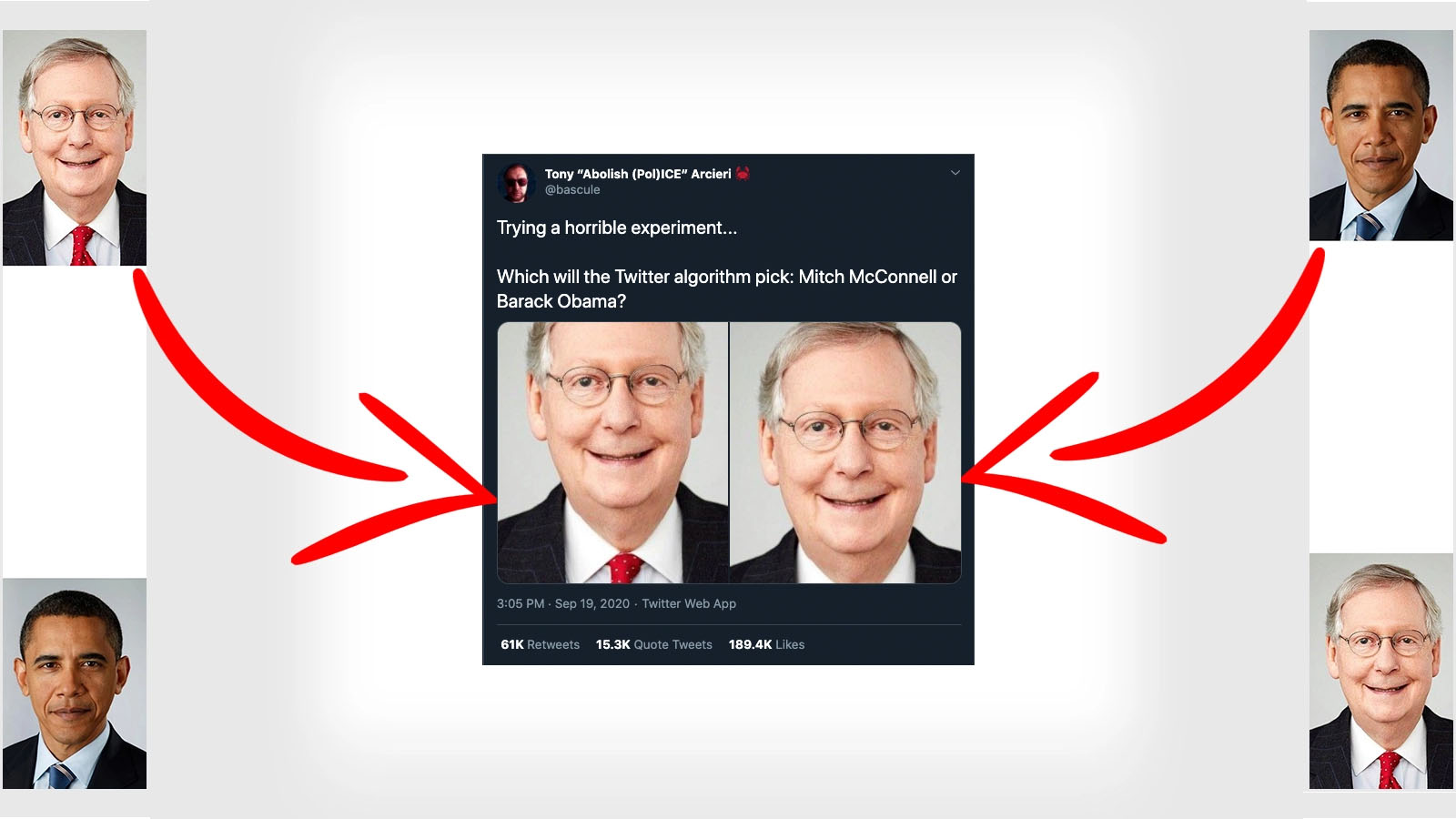Twitter axes AI cropping after tests prove racial bias
Twitter ditches its 'intelligent' thumbnail algorithm after tests conclude it exhibits a racial bias

Twitter is axing its AI-powered 'intelligent' cropping feature after substantiating claims made by users that the algorithm to decide which area to crop could exhibit a racial bias.
Last years there were numerous claims that the algorithm used to create thumbnail images of larger pictures favourite light skin over dark. One prominent example was a test by cryptographic engineer Tony Arcieri featuring former President Barack Obama and then-Senate Majority Leader Mitch McConnell. When the two photos were uploaded with a significant amount of white space between them, the algorithm would always center the crop on McConnell’s face. Obama only appeared in the thumbnail image when Arcieri inverted the colors, making skin color a non-issue.
• Read more: Best camera phones
Twitter first incorporated its AI-powered 'intelligent' photo cropping in 2018 to automatically generate cropped previews of larger photos, which could then be expanded when clicked or tapped. “The saliency algorithm works by estimating what a person might want to see first within a picture so that our system could determine how to crop an image to an easily-viewable size,” explains Twitter software engineering director Rumman Chowdhury.
Three weeks ago Twitter announced it was finally rolling out bigger images in users' feeds, to the delight of many photographers. The decision allowed image makers to share their photos on the platform without worrying about Twitter’s cropping algorithm, with photos being shown in all their glory by default.
Twitter is now moving away from AI photo cropping and putting the decision-making back in the hands of users. “We considered the trade-offs between the speed and consistency of automated cropping with the potential risks we saw in this research,” Chowdhury says. “One of our conclusions is that not everything on Twitter is a good candidate for an algorithm, and in this case, how to crop an image is a decision best made by people.”
The move follows hot on the heels of Google's announcement that it is improving white balance and exposure control algorithms in new phones such as the foldable Google Pixel 6 to correctly expose for black skin after decades of an underlying racial bias in analogue and digital photographic processes.
Get the Digital Camera World Newsletter
The best camera deals, reviews, product advice, and unmissable photography news, direct to your inbox!
Read more
Best budget camera phones
Best add-on phone lenses
Best LED light panels
Laurence is an NCTJ-trained journalist with nearly 20 years' editorial experience gained on a wide range of publications, from The Beirut Times in Lebanon to The Sunday Times, and including recent freelance engagements with Future's cycling and automotive portfolios, Outdoor Fitness, and The English Home. He has recently been undertaking a sports broadcast journalism MA at Southampton Solent, gaining valuable TV and radio experience, and am currently videographer for Frome Town FC soccer team. He is the author of Bikepacking (Wild Things Publishing, 2016).

